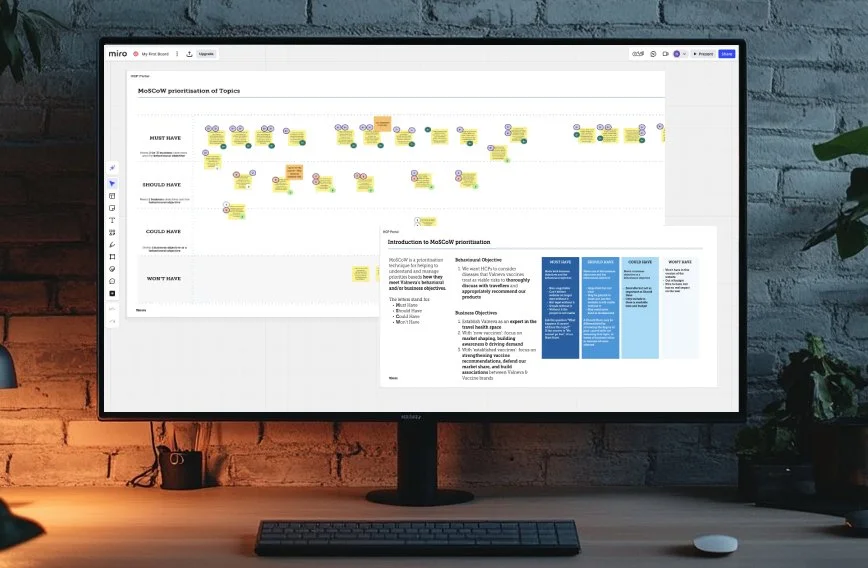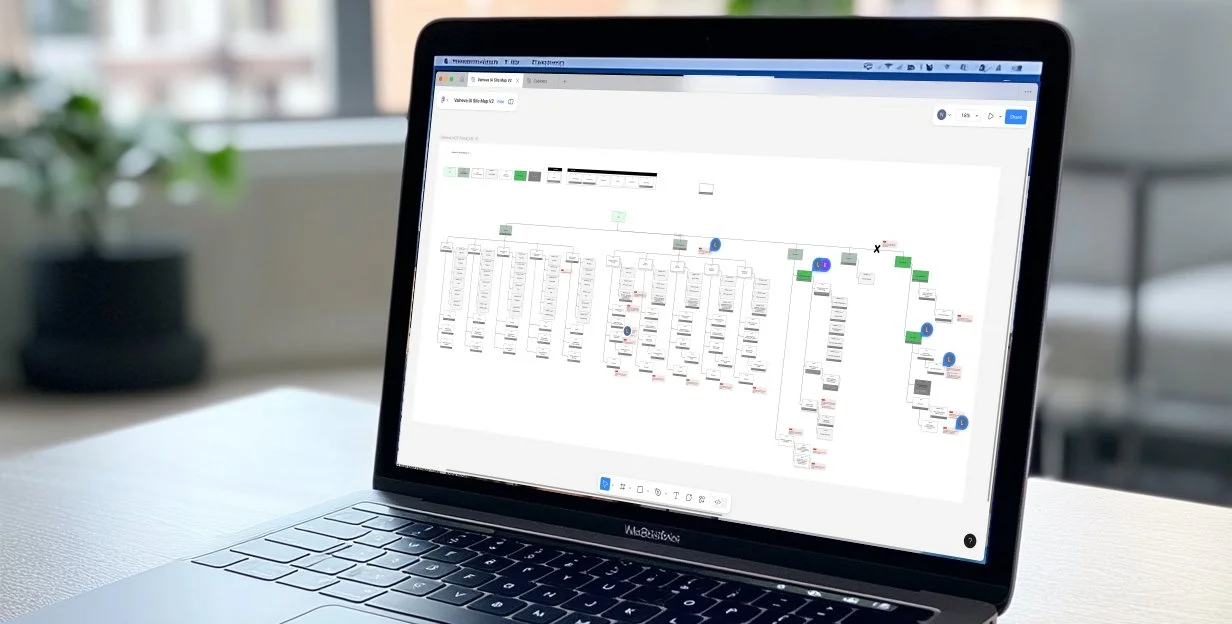Innovation | Marketing
Research and Design Strategy
Pharmaceutical Global Vaccination Website
Overview
The Head of Digital was preparing for a global website consolidation to promote its new travel vaccine and to provide a one-stop shop for existing vaccines when I joined the project.
Each country had distinct healthcare models, regulatory constraints, and various language requirements, which complicated the rollout of a unified strategy for a global portal.

Scope
The goal was to consolidate all web assets across five countries—UK, France, USA, Canada, and Austria—into a single global web experience to reduce the cost of managing individual portals.
Role
I was brought in to lead the research and build the Research and Design Strategy for the global portal for patients and healthcare professionals (HCPs) regarding travel vaccinations.
Approach
The research identified the travellers' journey from their initial idea of travelling to exotic destinations that require travel vaccination, to gaining awareness of the need for vaccination, to becoming buyers.
We also researched the healthcare providers' (HCPs) experience in educating and administering travel vaccinations, as these vaccinations are often not readily available and can be an out-of-pocket expense.
Armed with this insight, we designed the experience for travellers and HCPs and what content is relevant at the various stages of their sales experience, especially in the context of each country's pharmaceutical regulations.
This was a unique opportunity to turn a fragmented project into a cohesive, user-led platform.
Research Leadership & Discovery Setup
Current pharmaceutical companies have several vaccine-specific websites for potential travellers and HCPS, depending on country regulations.
These pharmacological sites explained the vaccine in detail (HCP websites), covering composition and administration, or traveller-focused sites to raise awareness about potential illnesses associated with exotic travel.
Challenges
However, the sites were disjointed in each country, making it hard for travellers to be informed about potential illnesses and how to find a healthcare provider (HCP) who could administer the necessary vaccine as a preventive measure.
Strategy
We understood that the strategy for the global portal would need to be part of an omnichannel experience to convince travellers about the necessity of getting vaccinated and remove barriers for them to take action.
We had to establish a baseline for the knowledge and experience gaps among travellers to build an experience using content marketing and website features, making them a valuable resource for education about vaccination, and ultimately converting them into buyers.
Online Interview with Proxies and Stakeholders
Defining the Global Website MVP
We developed our strategy using the Jobs-To-Be-Done (JTBD) framework to define the scope of the Minimum Viable Product (MVP) or the Minimum Lovable Product for the different markets.
Screenshot of JTBD and the HCP Journey Map
We collaborated with key business stakeholders and asked them to rate and prioritize the 30 to 40 JTBDS to understand the business priorities. These results were captured in Excel, allowing us to identify the top priorities for the business.
Alignment Workshop
To ensure alignment with the marketing leads, we conducted a MoSCoW (Must Have, Should Have, Could Have, and Won't Have) prioritisation workshop with the countries to identify which JTBDs were most relevant in their regions.
This process helped us identify overlaps between customers, businesses, and marketing across markets for the initial global portal rollout.
Workshop Screenshot
Stakeholder Engagement
The JTBD framework provided a clear structure for stakeholders across marketing, medical, and regional teams to connect user needs with business and content goals.
By involving them directly in the prioritisation process—rating 30–40 JTBDs and participating in MoSCoW workshops—we were able to build early consensus on the portal strategy.
Sitemap for the global site
Content Strategy & Taxonomy Overhaul
Initial Challenge
Content across regions was fragmented, created primarily for print or campaign use, and was not optimized for digital experiences or user journeys. There was no unified taxonomy, tagging structure, or strategy for content reuse or localization.
Our Approach
I worked with the strategist and content strategist to review the existing digital and print content, aligning it with the prioritized JTBDs. This process allowed us to outline what topics were missing to meet the user's needs and where notable content gaps existed. By understanding what the pharmaceutical company had already produced—and what was missing—we built a clear roadmap for content creation to better attract travellers and healthcare providers (HCPS) to the portal.
Stakeholder Win
Enabled the team to clearly see existing content strengths and weaknesses to manage the client's expectations on what content could be included at the initial launch of the global portal.
Translating Research into Design Direction
Although I was not the design lead on this project, my close relationship with her allowed me to take on the responsibility of managing and guiding the junior designer tasked with developing the site's information architecture.
I collaborated closely with the designer to ensure that the information architecture accurately reflected the travellers' journey we had identified in the previous step.
Stakeholder Collaboration
Acted as the research-to-design translator—bridging technical, legal, and design constraints to ensure we stayed user-centred without compromising on compliance or scalability.
Outcomes
My strategic impact on the project
Designed and executed a full multi-phase research strategy (internal, proxy, and direct HCP interviews).
Personally identified and evaluated a multilingual research and recruitment agency to support healthcare professional interviews.
Developed detailed user profiles and authored multilingual interview guides for use across three countries and languages.
Set up the research operations framework, including briefing materials, tools, and agency-ready documentation, to ensure consistency and quality in external research execution.
Created and socialised a Jobs-To-Be-Done framework that anchored design, content, and development in user needs.
Audited and restructured content into a new taxonomy aligned with user behavior, and localization needs.
Successfully shifted the project from a content migration to a user-centered strategy.
Reflection & What I'm Proud Of
This project was a standout example of shaping a strategic foundation in a cross-border and highly regulated environment.
I'm particularly proud of how I drove alignment between cross-functional teams, established robust research operations, and elevated the role of design in a medically sensitive, multilingual context.
The frameworks, research, and content systems we built laid the groundwork for a digital experience that's scalable, compliant, and genuinely helpful for both travellers and healthcare professionals.



